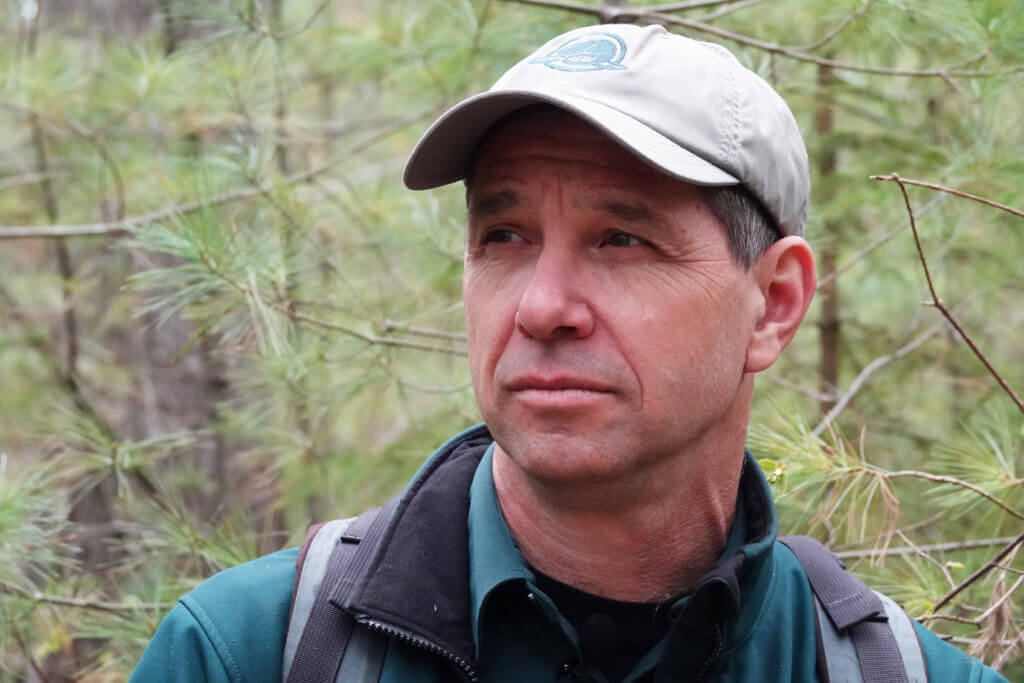FIRED UP
PRESCRIPTION FOR REGENERATION
Restoration specialist committed to bringing back Quebec’s pine forests
Working on such long-term goals helps give some perspective on our place and duration in this world.

Eastern white pines once dominated the forests of what is now La Mauricie National Park in Quebec, but colonial logging devastated this species. Once making up nearly half of the area’s forests, eastern white pines now account for only 12 per cent.
Michel Thériault is hoping to change that; he is a restoration specialist with the national fire management division in Canada, part of a team supporting Parks Canada and co-ordinating its fire management program.
“More specifically, I’m co-ordinating the review and renewal of our prescribed fire program at a strategic level,” says Thériault. It is this prescribed fire program that is helping to regenerate the eastern white pine populations by utilizing wildfires to develop ideal conditions for their growth.
Thériault lives in St-Mathieu-du-Parc in Québec, a small community on the north shore of the St. Lawrence River. A landscape of rolling hills dotted with lakes and rivers once famous for its hunting and fishing clubs, the community is now home to provincial and national parks. Just to the north of St-Mathieu is La Mauricie National Park, where Thériault began his career as a park warden.
Thériault started with Parks Canada in 1991, just as it was introducing the prescribed fire program, and worked to bring it to maturity, which was a first for Eastern Canada at the time.
“At this time, park wardens were still generalists providing services in natural resources conversation, national park law enforcement, and public safety,” Thériault says. “For a freshly graduated biology student, it was a dream job.”
Thériault graduated with a biology degree from Université du Québec à Rimouski in 1986 and completed graduate studies in forest fire ecology and forest landscape dynamics at Université du Québec à Chicoutimi. After 15 years as a park warden, Thériault shifted to operations co-ordination before returning to fire management with Parks Canada; he eventually transitioned into the national fire management division.
As climate change worsens the Canadian fire season, and human expansion heightens the consequences, Thériault believes that international collaboration is more important than ever.
“I was deployed to Australia last year, which was an amazing experience from a professional and human point of view,” says Thériault. “I learned many interesting things. The importance of a common structure like the incident command system for the integration of various agencies, and the level of integration they have, is very applicable to Canada.”
Thériault admires the proactive post-fire and recovery planning that takes place in Australia, as well as the inclusion of Aboriginal Australian specialists to mitigate the impact of fire management activities on Aboriginal culture and sacred sites.
Working on the prescribed burning program over the last 30 years has given Thériault a unique perspective about how such a program evolves. The first prescribed burns took place on old spruce plantations, which were burnt slash with the goal of restoring them to natural forests. “Science has demonstrated that fire has real, important, and positive impacts for most North American ecosystems,” Thériault says. “This is why we try to manage wildfires using strategies that minimize our influence on the effects of fire when possible.”
The eastern white pine, as well as the red pine, are fire-adapted species, meaning they can survive intense fires on the surface such as during a prescribed fire. These fires open the canopy up by clearing out the saplings of other trees such as balsam firs, establishing favourable conditions for pine seeds to establish themselves and grow. These burns are supplemented with planting operations when needed, with the goal of increasing the density of pines in areas they were once more common.
Results from burns in the 1990s are only now beginning to show results, but the long wait was always expected. With the program now well established and accepted by the public, Thériault plans one last tour of the burn units before he retires.
“I won’t live long enough to see those young pines reaching maturity,” Thériault says. “These trees live easily up to 300 years and grow slowly, so all this is just a small contribution to a long process. Working on such long-term goals helps give some perspective on our place and duration in this world.”
